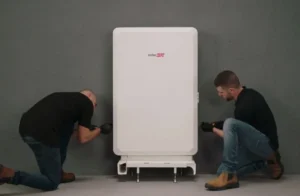The subsidy-free 350MW Cleve Hill Solar Park, the largest solar farm in Britain if approved, is expected to receive the green light from ministers this week, according to a report from The Guardian.
According to The Guardian, the Cleve Hill Solar Park developers are expecting to receive a development consent this week from the UK Government’s Secretary of State for Business, Energy and Industrial Strategy, Alok Sharma, almost three years after talks with local stakeholders began over plans for the park.
If approval is granted as expected, the project’s developers – Hive Energy, one of the UK’s leading solar developers, and Wirsol Energy, a global solar construction and operations company – hope to begin construction early 2021, with operations to begin by 2023.
The Cleve Hill Solar Park has the potential to generate enough electricity to power the equivalent of over 91,000 British homes, consisting of 880,000 solar panels across 364 hectares of farmland in the Kent countryside, in England’s south-east. The project will also include on-site battery storage – however, the developers have not provided much information on the storage specifics.
At 350MW the solar farm would be bigger than any solar project so far constructed in Australia, although there are numerous but as yet unconfirmed plans for even bigger projects in NSW, Queensland, South Australia, West Australia and the Northern Territory.
The £450 million ($A843 million) project is not without controversy, however, despite its importance in the UK’s plans to build a net zero emissions economy by 2050. Local activists are concerned about the size of both the solar park itself and the size of the battery storage facilities.
Helen Whately, the Conservative MP for Faversham and Mid Kent is quoted by The Guardian as saying that the scale of the development of the Clive Hill solar and energy storage park would have a “devastating” impact by “industrialising” the countryside.
“We’re not talking about a few fields – this would destroy an entire landscape,” Whately says. “I want to see us reach net-zero by 2050, but this should not come at any cost.”
Separately, the Campaign to Protect Rural England in Kent has pointed to the size of the proposed battery storage facilities which they claim will be five times the size of some of the world’s largest storage projects, which they believe could increase the risk of explosions and fire.
However, Hive Energy and Wirsol Energy have rebutted claims that they have not given due consideration to the safety concerns of local residents, or the impact of the local environment.
Importantly, Cleve Hill received support from the UK’s Planning Inspectorate earlier this month after adding plans to preserve native woodland and scrub within the bounds of the site by hosting a habitat management area of more than 138 hectares, which would include a new bat roost. The planning will also include footpaths for ramblers and a buffer zone of at least 63 metres between the solar park and the Saxon Shore Way.
The UK’s solar power pipeline sits at around 8GW at the moment, according to Finlay Colville at the Solar Power Portal, after record new capacity was added to the pipeline during April, with 738MW of new projects added across 19 new planned sites.
This year has also already seen record solar output from existing capacity which helped the UK achieve a new record coal-free period – which currently sits at over 46 days and counting.
STA Chief Executive Chris Hewett said: “Solar is playing a critical role in delivering a fossil-free grid and cleaner, cheaper power to Britain,” said Chris Hewett, Chief Executive of th UK’s Solar Trade Association (STA). “As we look towards a net zero future, solar will become an increasingly greater part of the energy mix, tackling high power prices, climate change, and biodiversity loss.”
“With the Government beginning to consider how best to kick-start the economy following the Covid-19 crisis, it has a golden opportunity to place renewables at the heart of its recovery package. Solar, in particular, can provide a glut of quality green jobs and growth at short notice, with your average solar park able to be built in less than six months, and home installation in less than a day. The industry is ready to help drive the revival.”
RenewEconomy and its sister sites One Step Off The Grid and The Driven will continue to publish throughout the Covid-19 crisis, posting good news about technology and project development, and holding government, regulators and business to account. But as the conference market evaporates, and some advertisers pull in their budgets, readers can help by making a voluntary donation here to help ensure we can continue to offer the service free of charge and to as wide an audience as possible. Thank you for your support.







